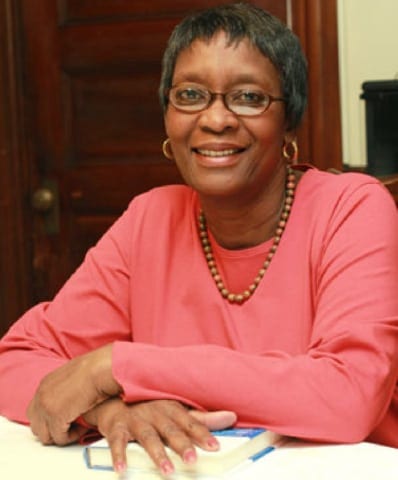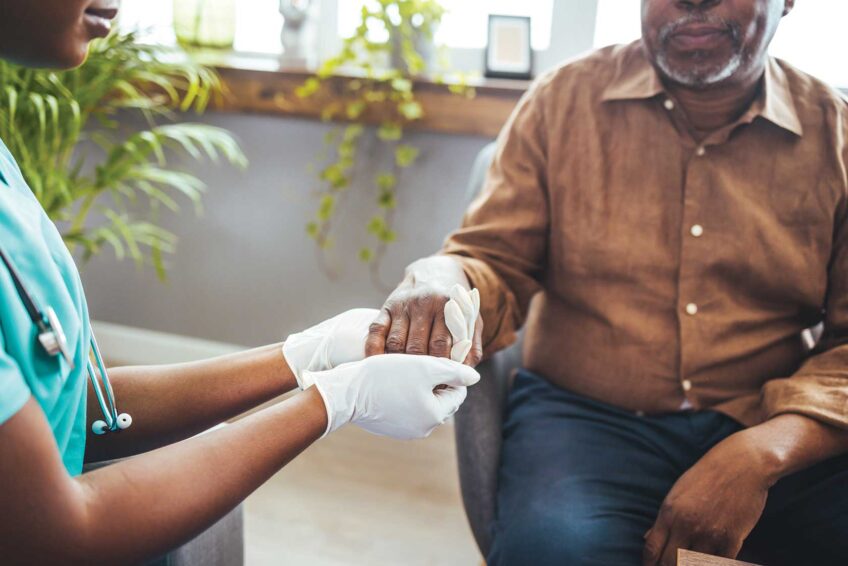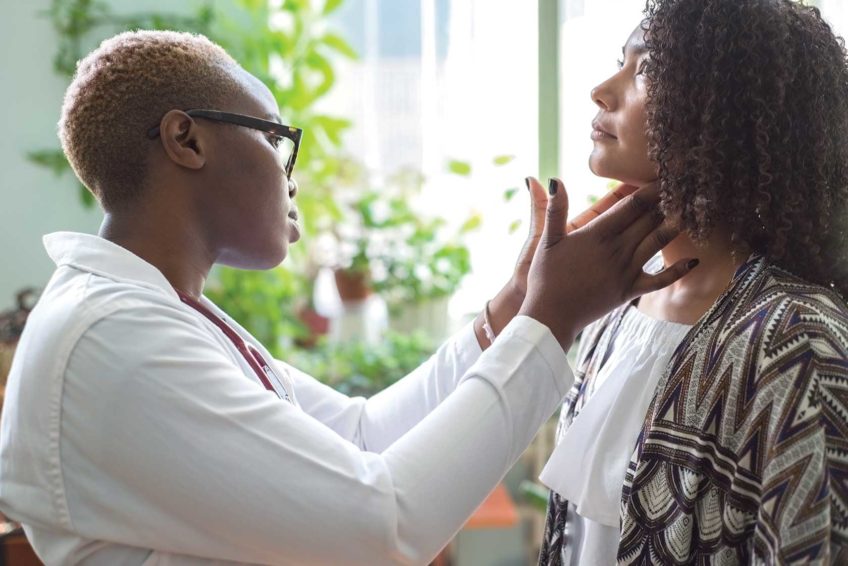January is Glaucoma Awareness Month
Comprehensive eye exams are key to controlling glaucoma

Petra Ebisemiju, a 69-year-old retired school nurse, didn’t know much about glaucoma before she was diagnosed with the disease. But she knows a lot now and is absolutely right when she says it is a “tricky little disease.”
For Ebisemiju, the disease started in her left eye about 12 years ago. She went for her yearly eye exam and the doctor told her that her pressure was elevated. “I didn’t know what pressure he was talking about,” she said.
She soon learned. Ebisemiju was diagnosed with angle closure glaucoma, a less common form of the condition. According to the Glaucoma Foundation, angle closure glaucoma is one more typically seen among Asian Americans.
But Ebisemiju had another characteristic often associated with that form of glaucoma. She is farsighted.
By the time she saw the ophthalmologist she said the doctor told her she had lost 95 percent of the vision in her left eye. That news really threw Ebisemiju. Even her driver’s license indicates normal vision. “I can see straight ahead, but I can’t see,” she said. “That’s very shocking.” But she couldn’t see to the side.
Talk about being quirky. Though glaucoma is typically characterized by high pressure in the eye, about one third of those afflicted have normal pressure, according to the Baltimore Eye Study.
That’s why checking pressure in an eye exam tells only half the story, according to Dr. Douglas J. Rhee, the chair of Ophthalmology and Visual Sciences at Case Western Reserve University School of Medicine. Rhee previously a glaucoma specialist at Massachusetts Eye and Ear Infirmary, explained. “The first step should be the appearance of the optic nerve,” he said.
In glaucoma the optic nerve shows an indentation or cupping that results when the pressure is too high for the nerve to tolerate. Nerve damage is identified through dilation of the pupil. A test called tonometry measures the pressure in the eye. Side vision is examined to check for blind spots that people may not even notice.
People should be aware of the risk factors of glaucoma said Rhee. “The biggest one is age,” he explained. Also, 40 percent of those afflicted have relatives with the same disease. Nearsightedness and high blood pressure are factors. So is race. “People of African descent and Hispanics are high risk,” Rhee said. Though glaucoma is the second cause of preventable blindness in this country, it is the primary cause of blindness in blacks. And in the world, for that matter. The reasons for this disparity are unknown.

Bishop John M. Borders, III
Senior Pastor
Morning Star Baptist Church
But there is hope. “We have good treatment,” Rhee said. And the treatments — medicine, laser surgery and incisional surgery — all work well. The type and timing of each depends on the individual’s condition. Most of the time the first line of attack is medicine, but for some, surgery is the first step.
It is important to distinguish between visual acuity and glaucoma, as Ebisemiju quickly learned. Being nearsighted or farsighted is not the same as glaucoma. A person can have 20/20 vision. They can see clearly an object that is 20 feet away, but still have reduced peripheral and tunnel vision and optic nerve damage.
A person can be prescribed glasses or contact lenses to improve acuity, but that prescription will not improve one’s glaucoma. “Likewise, If you need glasses, that doesn’t mean that your eyes are unhealthy,” Rhee said.
As the baby boomers age, they will undoubtedly cause an increase in the incidence of glaucoma. In response the Glaucoma Foundation teamed with the Alliance for Aging Research and Merck to develop TAKE (Take Action to Know your Eyes) on Glaucoma to teach consumers about the risk of glaucoma, the necessity of comprehensive eye exams, including dilation and proper management if diagnosed.
No one needs to tell Bishop John M. Borders, III, the senior pastor at Morning Star Baptist Church, about eye examinations. He is on a personal mission to save his eyesight. His problems started during childhood.
“I was hit in the eye during a rock fight when I was a little boy,” he explained.
What Borders did not know at the time is that blunt trauma to the eye can cause glaucoma immediately or years later. The trauma, which can result in an accumulation of blood and debris, clogs the drainage canals of the eye.
Traumatic glaucoma has halted many a sports career. Kirby Puckett of the Minnesota Twins had his career cut short after being hit in the eye with a baseball.
Years after the accident, headaches and pain in the eye led Borders to have an eye examination. He did not have an easy time of it. His eye pressure could not be well maintained with eye drops.
“The pressure would go down and get back up,” he said. Since the medication was not working well, he had laser surgery, but that was not the answer either.
He had to undergo several surgeries as well as procedures to break up scarring that resulted from the surgeries. The development of cataracts further complicated his recovery.
But a miracle was in the works. After multiple surgeries and follow-up treatment, Border’s eye pressure has remained normal — and without the benefit of eye drops. He goes back every six months for a checkup. The only tell-tale sign of his condition is a drooping eyelid.
“It’s a miracle that I can see,” said Borders.
Ebisemiju now takes two different types of eye drops daily. She had surgery to improve the drainage in her left eye. So far so good although a cataract in her right eye is causing her concern.
In spite of everything, the glaucoma has not changed her lifestyle except for one thing — driving. People passing from behind on her left are particularly troublesome. “When you finally see them, they’re right there,” she explained. “That’s scary.”
She has given up on driving at night. “It’s hard to read the signs,” she said.
What’s your risk of glaucoma?
- African Americans and Hispanics
- People over age 60
- Those who have family members with glaucoma
- Those who have sustained eye injuries, particularly blunt trauma
- People with thin central cornea (the front part of the eye)
- Those on prolonged high doses of corticosteroids
- People with certain medical conditions, such as high blood pressure






